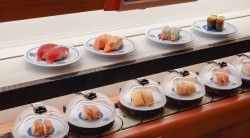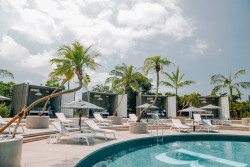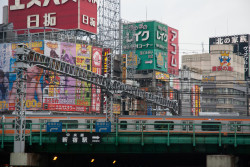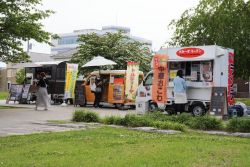
Originally published on metropolis.co.jp on October 2010

Photos by James Hadfield
If you’re on your third Martini of the evening, not only are you drunk, but you’ve had the tippler’s equivalent of a three-course meal consisting entirely of steaks. Appetizer, entrée and dessert. You feel like a hero, but you look a bit daft.
The more prudent drinker talks to their bartender, specifies a liquor base, says whether they want it long or short, fruity or not, sappari (refreshing in a sharp, lemony way), sukkiri (refreshing in a bubbly, soda way) or sawayaka (refreshing in a minty, morning dew way). A top-tier barkeep won’t need much prodding for the second drink: they’ll consider what you’ve been drinking, how late it is, how tipsy you look and any taste preferences you may have imparted. They might still suggest a Martini, but if they do, it’s because you’ve eased into it and you look like the kind of champ that can handle a bowlful of alcohol.
Don’t take my word for it. I asked Japan’s most prolific bartender, Hidetsugu Ueno, to devise a three-drink menu for a hypothetical customer. The globe-trotting bartender, who’s based at Bar High Five in Ginza, is known for hand-carving ice diamonds, making exceptional White Ladies, and being on more cocktail judging panels than anyone knew existed. Less famously, he has an uncommonly low tolerance for alcohol, so I asked him to plot an evening of refreshment for a light drinker. He sent me two menus, one for preprandials, one for afters.
 Before dinner, he suggests beginning with a Bamboo (sherry, dry vermouth). It’s a classic aperitif, beloved in Japan partly because it was invented here, partly because it looks like a proper drink of the Martini caliber but consists only of wines so it won’t get you sloshed. Next, he recommends a Moscow Mule (vodka, ginger ale, lime), saying it “won’t interfere with the meal to come,” and to finish, a Champagne cocktail with seasonal fresh fruit. The bubbles, he says, will build expectations for the night.
Before dinner, he suggests beginning with a Bamboo (sherry, dry vermouth). It’s a classic aperitif, beloved in Japan partly because it was invented here, partly because it looks like a proper drink of the Martini caliber but consists only of wines so it won’t get you sloshed. Next, he recommends a Moscow Mule (vodka, ginger ale, lime), saying it “won’t interfere with the meal to come,” and to finish, a Champagne cocktail with seasonal fresh fruit. The bubbles, he says, will build expectations for the night.
If you’ve already dined, Ueno suggests starting with the Moscow Mule as a palate cleanser, followed by a dessert-style fresh fruit cocktail. For the finale, a Grasshopper (crème de menthe, crème de cacao, light cream): a creamy, liquid dessert not unlike a liquid after-eight mint, with only a vague hint of alcohol. According to Ueno, “It’s heaven to finish your night with this.”
For a more alcoholic menu, I figure I’ve had enough practice on the drinking side of the bar to put a list together. I’d begin with the Bamboo, too, for the same reason as Ueno. It’s a fantastic aperitif that’s just potent enough to get the evening started, and leads brilliantly into an Alaska (gin, yellow Chartreuse, orange bitters). If you thought Martinis were hard-bitten, try one of these—while they’re more potent than most drinks, they’re still sweet and approachable.
To finish, a Port always works, but it seems a shame to have the ear of a skilled bartender and ask for nothing more than the kind of pour your gran could do, so I’ll pick a Cherry Blossom (cherry brandy, cognac, orange curacao, grenadine, lemon juice). Like the Bamboo, the Cherry Blossom was invented in Yokohama, and though some of the more hardened gents out there might balk at ordering anything so sweet or with such a sissy name, trust me: it’ll wrap the evening up nicely. (Try a Rob Roy—Scotch and sweet vermouth—if you really need a red-blooded option.)
And if none of that sounds good, ask your bartender. It’s what he’s there for.
Bar High Five: 4F 26 Polestar Bldg, 7-2-14 Ginza, Chuo-ku. Tel: 03-3571-5815. Open Mon-Sat 6pm-2am, closed Sun. Nearest stn: Ginza, Yurakucho or Shimbashi. www8.ocn.ne.jp/~highfive







